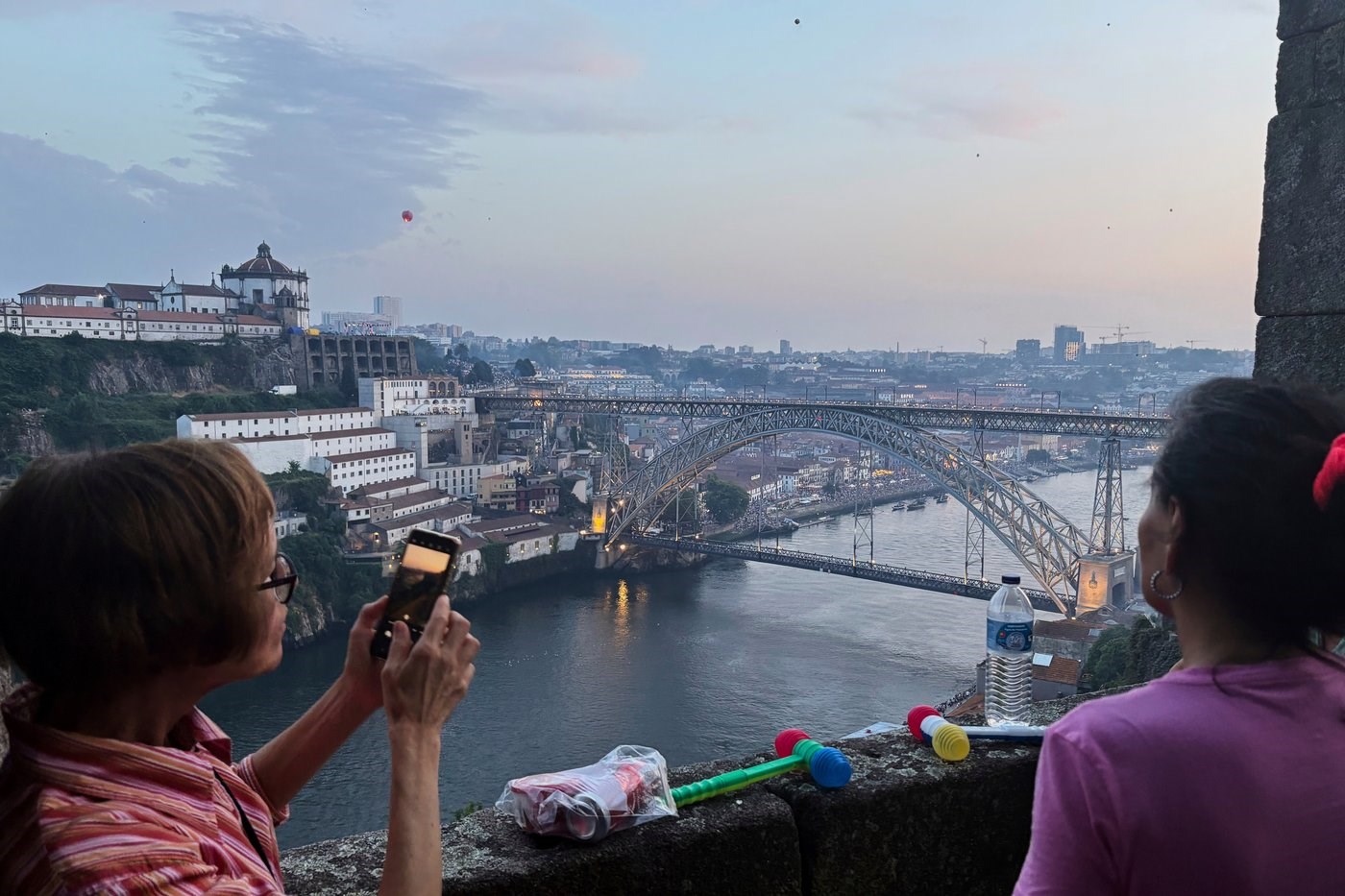
People rest their plastic hammers on a wall while watching flying lanterns soaring above the Douro river as the northern Portugal city of Porto, gears up to celebrate Saint John feast, Monday evening, June 23, 2025. (AP Photo/Helena Alves)
Republished June 24, 2025 - 3:02 PM
Original Publication Date June 24, 2025 - 3:11 AM
PORTO, Portugal (AP) — On Porto's steep streets, several thousands of people celebrated the summer in the way the city has been doing it for decades and centuries: by bonking friends and strangers alike with toy hammers and reveling in the streets all night.
A Christian holiday with pagan roots, the eve of the feast of St. John the Baptist is celebrated with fireworks, balloons and lots of grilled sardines. An older St. John's Eve ritual in Portugal's second-biggest city involved buying leek flowers believed to bring good fortune and inviting strangers to sniff the pungent plant.
In the 1960s, a local businessman introduced the playful plastic hammer, which has since become the most famous symbol of the Iberian city's raucous summer solstice celebration.
It's a “celebration of energy, a celebration of what the city of Porto is,” resident Joao Sousa said, moments after being clubbed with a toy hammer. “It's to live and relive what our ancestors have given us and be able to still enjoy it today.”
St. John's Eve — São João in Portuguese — is considered to be the longest night of the year and among the most special for locals.
In the days before the festival, local shops adorn storefronts with miniature dioramas called “Cascatas” that feature figures of St. John the Baptist, scenes from his life as well as depictions of daily life in Porto. A central element in many dioramas are waterfalls, for which the elaborate miniatures get their name.
The dioramas also highlight the holiday's dual Catholic and pagan roots.
“It is a pagan celebration. It is the cult of the sun, of fire, of water," said Germano Silva, a renowned writer and historian of the Portuguese city. “The saint enters when Christianity begins. The church in a successful marketing operation adds the saint into the solstice celebration,” he said.
The festival's essence lies in having the freedom to use a plastic hammer on friends and strangers without starting a fight.
Not even Portugal's Prime Minister Luís Montenegro was spared. On Monday night, Montenegro took part in the Fontainhas neighborhood overlooking the Douro River. While some revelers took photos with him, others simply saluted him with their colorful plastic hammers.
Tourists took part in festivities, too. Helni Turtaea, a 21-year-old from Finland, said the hammer hitting startled her at first but she quickly saw its charm.
“At first I got frightened when someone hit me ... but it has been so much fun because I think it kind of unites people when they are hitting strangers," Turtaea said.
Porto historian Silva said the celebration is about unifying strangers no matter their differences — beginning with inviting strangers to lean in and smell the leeks a person carried, to now greeting a stranger with a playful tap.
“We don’t know whom we cross paths with, if the person is rich or poor, a doctor or a factory worker,” Silva said. On the night of June 23, he said a stranger is simply “someone who passes by and is celebrating São João with us.”
___
Naishadham reported from Madrid.
___
Associated Press religion coverage receives support through the AP’s collaboration with The Conversation US, with funding from Lilly Endowment Inc. The AP is solely responsible for this content.
News from © The Associated Press, 2025